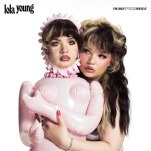Ten Awesomely Weird Guitar Solos
For a lot of young Guitar Hero-inspired guitarists, it’s their dream to stand on top of a piano, equipped with leather pants and a Gibson Les Paul. With the wind blowing through their hair and a Marshall stack cranked to 11, the conditions would be perfect for tear-jerking string bends and spot-on trills.
The musicians of this list had no such fantasy. Instead of taking the pre-paved road that is the modern guitar solo, they pushed the limits of good taste, tonality, and what is expected of the person playing the six-stringed instrument.
10 – Nine Inch Nails – Ruiner
Toward the middle of Nine Inch Nails’ The Downward Spiral, “Ruiner” comes to a complete halt so Trent Reznor could let loose on a sloppy, claustrophobic solo. Confined to the left speaker, the solo is a buzzing, chaotic take on a Pink Floyd classic:
“I think I accidentally called up the wrong patch (on a guitar effects pedal),” Reznor said about the solo in a Guitar World interview. “I’m not a soloist. I was just laughing when I was playing with this ridiculous sound, recording into the computer saying like, ‘This is so cheesy,’ you know? I later realized that I basically tried to play a ‘Comfortably Numb-type’ solo with this sound.”
9 – Radiohead – Go to Sleep
Before it was released, Radiohead’s Hail to the Thief was anticipated to be the band’s return to guitar-rock. On songs like “Go to Sleep,” the band showed speculators that they were only half right. Instead of using a synthesizer or sampler, guitarist Jonny Greenwood made stuttering broken-machine whirrs bounce from his super-processed Fender Telecaster. Out of context, the part sounds normal coming from Greenwood, but when it plays over Thom Yorke’s resonating acoustic guitar, there couldn’t be a bigger contrast.
-

-

-

-

-

-

-

-

-

-

-

-

-

-

-

-

-

-

-

-

-

-

-

-

-

-

-

-

-

-

-

-

-

-

-

-

-

-

-

-








































